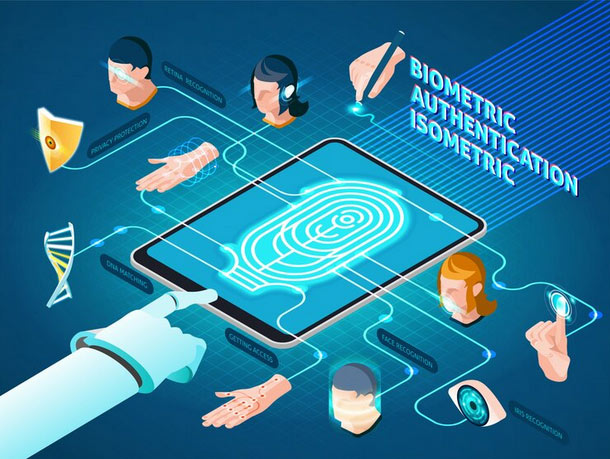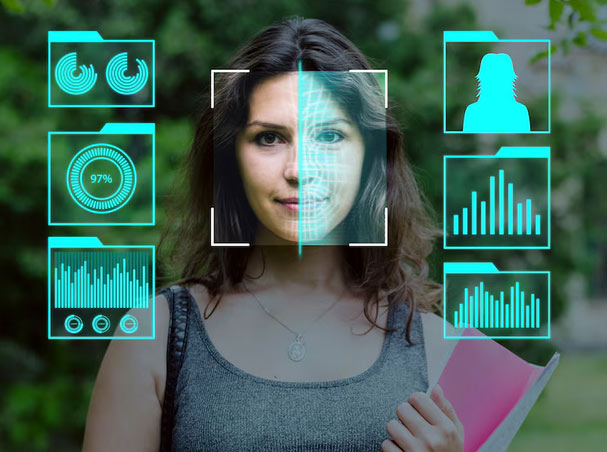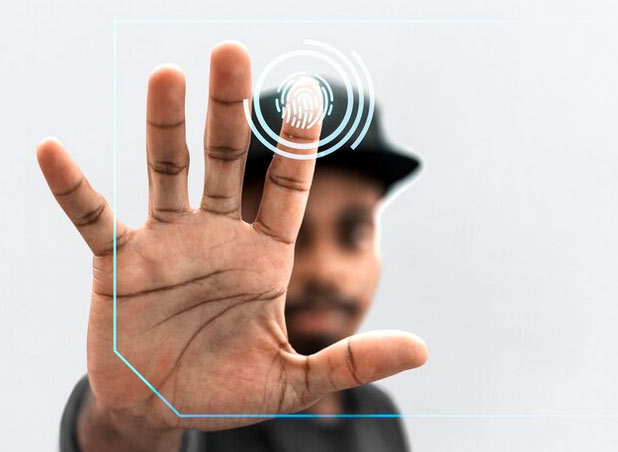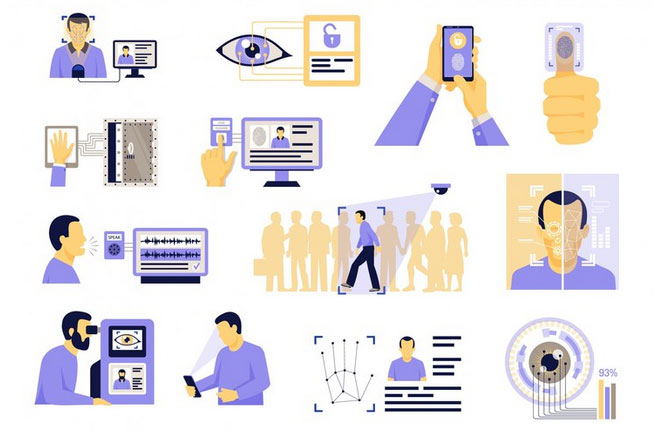Biometric Solutions: Technology, Security, And Applications
Biometric solutions are revolutionizing identity verification, providing enhanced security and efficiency across sectors. Research indicates the global biometric system market is expected to reach $84.5 billion by 2029.
But what exactly is biometrics, and why is this technology so booming?
Worry not; we have answered all your questions related to biometrics here.
In this blog post, you will learn what is biometric solutions in detail and their applications in real life. We will also understand if biometrics is safe and what threats it poses.

What Are Biometric Solutions
Biometric Solutions are softwares that analyze physical and behavioural patterns to identify an individual. Examples of biometrics include fingerprint scanners, facial recognition, and thumbprint software.
Biometric Technologies can be divided into two groups -
Biometric hardware like fingerprint scanners, face readers.
Biometric software like physical access control solutions and attendance tracking systems.
The reason why biometric technology is becoming popular is because of its manifold benefits, like enhanced security, streamlined processes, and reliable identity verification. Traditional ID systems lacked security and were easily forged. However, biometrics rely on unique human traits like fingerprints or facial features, which are difficult to replicate.
Let us understand it using a real-world case study.
Turkey is home to one of the largest refugee populations globally. Due to civil wars, there was a massive humanitarian crisis. This resulted in some 5.6 million refugees flooding to Turkey to seek refuge.
Problem - The government created a Directorate General of Migration Management to help refugees with basic facilities like food, water, clothing and shelter. But, one major issue the government faced was identity management. Lack of IDs and passports of refugees leads to malpractices like face IDs and forged document creations, leading to fraudulent activities. The help was not being reached to the victims.
Solution- In 2018, the government employed fingerprint biometric scanners to register refugees. Biometric entry was made at entry checkpoints for Syrian refugees entering the country. This simple move made financial aid reach the refugees.
Results of biometric fingerprint scanner implementation:
Improved Management of Refugee Camps
Access to Welfare from the Government
Increased Security and Accuracy Of Data
Elimination of Theft Identity and Fraud
How Is Biometric Technology Applied In Real-World Scenarios?
The following are the key application cases of Biometric Solutions:
SIM verification - Due to double-factor authentication, SIM cards are registered only to genuine persons. Biometrics thus prevent multiple identities from using one SIM card. Countries like Nigeria and Vietnam use biometric SIM registration to reduce SIM-related fraud.
Visa Application - To prevent intruders and terrorists from entering from abroad, biometric scans are done for the visa application process. In India, ten fingerprints and facial scans are mandatory biometric enrollment done while applying for visas.
Voter registration - Biometrics prevent voter fraud by ensuring only eligible individuals cast their ballot.
Airport Security - Airports worldwide use biometric systems for efficient security screening. Iris recognition while travelling to another country is an example of a real application of biometrics.
Time attendance systems - Businesses use fingerprint scanning to take employee attendance at the workplace. This is done to prevent "buddy punching," where employees clock in for each other.
Civil ID Systems - Biometric civil ID programs store citizens' biometric data to enable easy verification for public services. India’s UIDAI Aadhaar system is one the largest biometric identification programs in the world. We have so far covered more than 1.3 million citizens' data via biometrics. Due to this, the Aadhaar system has helped eliminate fraudulent claims and improve the efficiency of public service delivery.
What Is A Biometric Machine
A biometric machine is an electronic device that captures, stores, and verifies the data collected from biometric identifiers like fingerprints or face scans.
In more detail, the machines first collect the data from the person. Then, the machine’s algorithm creates a biometric template, which is verified with the biometric database. If the template matches, the control is granted. If not, it shows an error.
Given the growing popularity of biometrics, these machines can be observed in areas like:
Airports Checking systems
Government agencies
Law enforcement
Big enterprises
Criminal investigations departments
What Is A Biometric Scanner
We saw how biometric machines verify a person's identity. But, the information is collected by a biometric hardware known as a biometric scanner.
A biometric scanner takes a digital copy of physical information for authentication purposes. Devices like the U-Match USB scanner and mobile biometric kits are popular fingerprint-scanning devices.

How Does Biometric Verification Work?
Here is a step-by-step guide on the verification process using a biometric technology like fingerprint matching or face recognition.
Step 1: A biometric scanner captures an individual’s information such as fingerprints, face, voice patterns or eye retina scans.
Step 2: The data is securely stored digitally.
Step 3: A biometric template is created from the stored data.
Step 4: The stored template is compared to the originally captured biometric template to confirm the person's identity.
What Are The Different Types Of Biometrics
The seven types of biometrics include:
Fingerprint biometrics
Face recognition
Voice recognition
Vein movement biometrics
Iris recognition
Hand geometry recognition
Behavioural biometrics.
Which Biometric Is Used Most?
Research by IEEE found that fingerprint scanning is the most used biometric technology solution. Almost 75% of people are comfortable using it.
But why are fingerprints most used? The following reasons add to it:
Uniqueness - Fingerprint scans are at least 98% accurate. Even identical twins don't share the same fingerprints.
Usability - The low effort ease of use makes fingerprint scanning a reliable and preferred choice.
Universality - From smartphones to access systems, fingerprint mapping can be implemented everywhere.

Is Biometric Technology Safe?
Biometrics are generally safer to use. Unlike passwords that are hard to remember and PINs that are easy to hack, biometric technology considers who you are to grant control. It relies on your fingerprint, voice, retina, or face scan to authenticate access over a system, data or device like a smartphone.
But, unlike any other technology, biometrics also has its share of risks and drawbacks. Read the next section to find out.
What Are The Risks Of Biometrics
Biometrics offer convenience and security for your data. But, it also poses significant risks :
Data breaches - When someone gets unauthorized access to your data via hacking or fraud, it's called data breaching.
Identity theft - Hackers who gain access to biometric data can use it to commit fraud or impersonate individuals.
Privacy concerns - Many government organizations and law enforcement agencies have tracked people's data. This raises serious ethical issues.

What Are The Disadvantages Of Biometrics?
While biometrics have great benefits, it also comes with certain drawbacks. Here are five disadvantages of biometrics solutions Inc.:
1. Data Security and Privacy Issues
Biometric data, like fingerprints and facial recognition scans, are extremely sensitive. If it gets hacked and leaked, it can cause millions of losses. A study by Gemalto in 2019 found that 39% of data breaches involved biometric data.
In fact, the 2015 breach of the U.S. Office of Personnel Management exposed 5.6 million fingerprints. This is indeed an alarming situation.
2. Costly To Implement
While biometric solutions are reliable and easy to use, they are costly on the pocket, especially for smaller organizations. To have biometric technology solutions, one must spend heavily on:
Hardware and software setup costs
Storage costs for protecting data
Regular updation and maintenance costs.
While MNCs and large-scale companies can absorb these expenses, startups and small-scale companies with limited funds may struggle to adopt biometric solutions in their organization.
3. False Positives and False Negatives
Biometric systems can sometimes make errors, either incorrectly identifying individuals (false positives) or failing to recognize authorized users (false negatives). These mistakes can lead to security breaches or lockout issues for legitimate users.
4. Accessibility Issues
Individuals with certain physical disabilities or temporary injuries like burns may find it difficult or impossible to use biometric systems. For instance, fingerprint scanners might not work for a person who had an accident and injured his finger. The system wouldn't grant access.
5. Lack of Standardization
There are no universal standards for biometric technology. So, a company that uses one system might face difficulty while collaborating with another company that uses a different system.
To overcome these issues, opt for softwares that:
Provide multi-factor authentication (MFA) options, such as combining biometrics with PIN codes or smart cards.
Deploys one-time biometrics to assure that an individual is not just real but also genuinely present while accessing data.
Use end-to-end encryption and decentralized storage systems to protect your data from getting leaked.
Utilize AI-enhanced biometric technology solutions that improve accuracy over time, reducing the likelihood of false positives and negatives.
Choose biometric platforms that follow international standards (such as ISO/IEC 19794), ensuring future compatibility and easier integration with other systems.
Looking for a cloud-based biometric solution that is affordable and safe? Trust Ekklavya Solutions - a leading software and biometric provider since 30 years.
We don't offer standard software. We understand your business needs and complexity and provide customized solutions. Contact us today and book your FREE consultation call.
Frequently Asked Questions About Biometric Solutions
1. Physiological factors include fingerprint scanning, face and iris recognition, retina scanning, DNA (deoxyribonucleic acid) matching and voice recognition.
2. Behavioural factors.that include mouse and finger movements, Handwriting Analysis, Gait Analysis and keystroke dynamics.
Fingerprint and facial recognition are the most used biometric solutions.